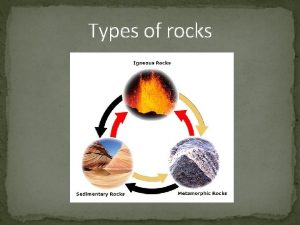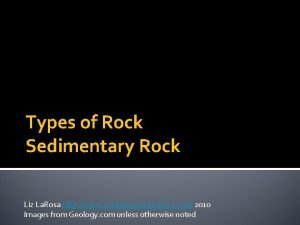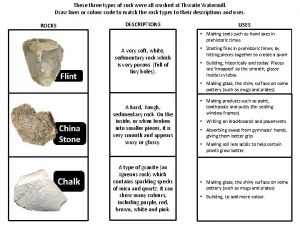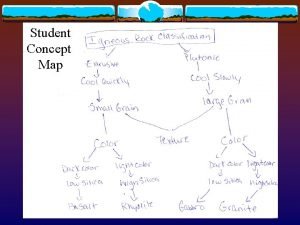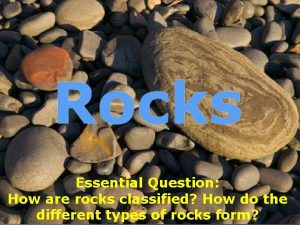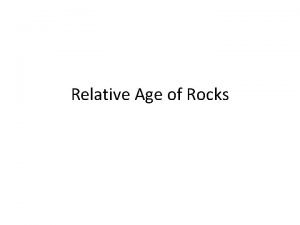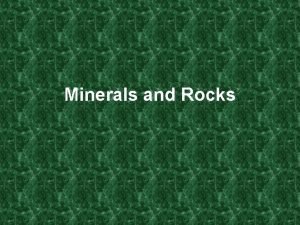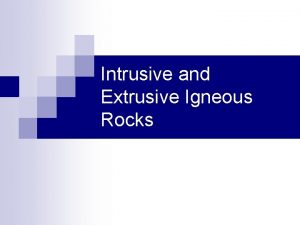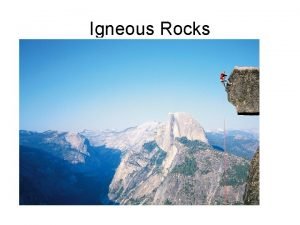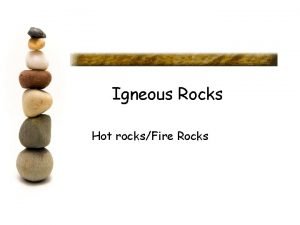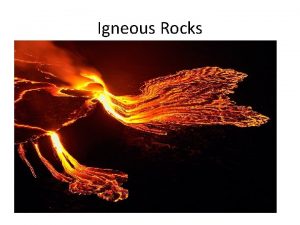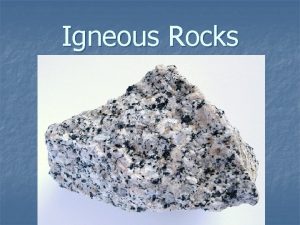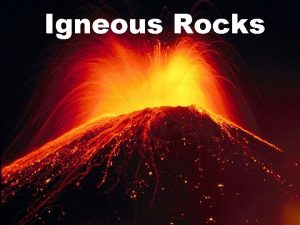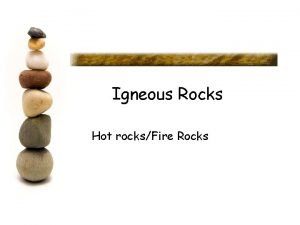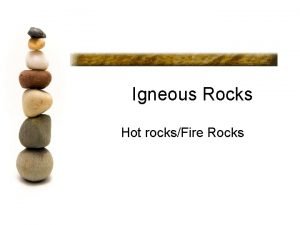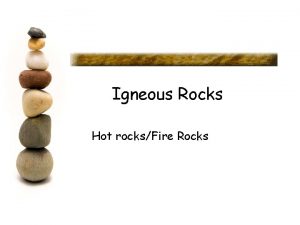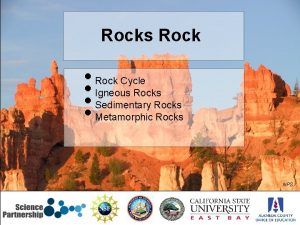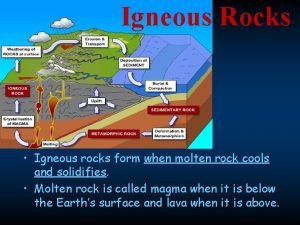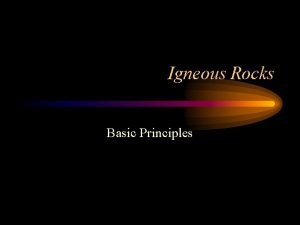Igneous Rock Igneous Rock n Igneous rocks form
















- Slides: 16

Igneous Rock

Igneous Rock n Igneous rocks form when magma (beneath the surface) or lava (reaches the surface) cools and hardens n Igneous comes from the Latin word ignis, which means fire n There are two types of igneous rock, intrusive and extrusive

Intrusive Igneous Rocks n Intrusive igneous rocks form when magma hardens beneath Earth’s surface n As magma rises, it cools, allowing elements to combine and form minerals n Minerals grow in size, forming a solid mass of interlocking crystals Granite is a common intrusive igneous rock

Extrusive Igneous Rocks n Extrusive igneous rocks form when lava hardens at the Earth’s surface n Lava is similar to magma, except that most of the gases have escaped in lava Rhyolite Basalt Obsidian

Classification of Igneous Rocks n Texture and composition are two characteristics used to classify igneous rocks n Texture describes the appearance of an igneous rock based on its size, shape, and arrangement of its interlocking crystals n Composition of igneous rocks are based on the proportions of light and dark minerals in the rock

Classification of Igneous Rocks n Texture describes the appearance of an igneous rock based on its size, shape, and arrangement of its interlocking crystals n There are four types of texture: Coarse-grained n Fine-grained n Glassy n Porphyritic n

Coarse-grained Texture n Slow cooling of magma allows ions, charged atoms, to move large distances within the magma n Slow cooling results in the formation of large crystals n Igneous rocks with large crystals show coarse-grained texture Gabbro Diorite

Fine-grained Texture n Rapid cooling of magma or lava causes ions to lose their motion and quickly combine n Rapid cooling results in the formation of many small, interconnected mineral grains n Igneous rocks with small grains show finegrained texture Rhyolite Andesite

Glassy Texture n When lava spews onto Earth’s surface, there may not be time for the ions to arrange themselves into crystals n The ions are randomly distributed causing a glassy texture in the igneous rock Obsidian (compact glass) Pumice (frothy glass)

Porphyritic Texture n Minerals that crystallize from magma do not form at the same rate or the same time n Some crystals will become large while others even start to form n Igneous rocks with large crystals and fine-grained minerals show a porphyritic texture Andesite

Classification of Igneous Rocks n Composition of igneous rocks are based on the proportions of light and dark minerals in the rock n There are four types of composition Granitic n Basaltic n Other Compositional Groups n

Granitic Composition n Made almost entirely of the light- colored silicate minerals, quartz and feldspar n Most granitic rocks contain 10% dark silicate minerals, often biotite and amphibole

Basaltic Composition n Made almost entirely of the dark-colored silicate minerals and plagioclase feldspar n Basaltic rocks are rich in the elements magnesium and iron

Other Compositional Groups n Rocks with a composition n Rocks composed entirely of between granitic and basaltic rocks have an andesitic composition n Named after the common volcanic rock andesite n Contains at least 25% dark silicate minerals, iron and magnesium, is referred to as ultramafic n Ultramafic rocks are rare at Earth’s surface because they make up the mantle. Peridotite

Igneous Rock Summary n Igneous rocks form when magma or lava cools and hardens n Intrusive rocks form from magma deep within Earth n Extrusive rocks form from lava at Earth’s surface n Igneous rocks can be classified according to texture and composition

Table 1 on page 74
 Igneous metamorphic sedimentary
Igneous metamorphic sedimentary Igneous metamorphic sedimentary
Igneous metamorphic sedimentary Types of rocks examples
Types of rocks examples Rock cycle model
Rock cycle model Concept map for igneous rocks
Concept map for igneous rocks The massive igneous rock from which tors develop
The massive igneous rock from which tors develop Three types of igneous rocks
Three types of igneous rocks Sedimentary rock concept map
Sedimentary rock concept map Intrusive igneous rocks examples
Intrusive igneous rocks examples Concept map of igneous rock
Concept map of igneous rock What is reletive age
What is reletive age Luster and streak
Luster and streak Rocks formation
Rocks formation Pumice extrusive or intrusive
Pumice extrusive or intrusive Intrusive vs extrusive igneous rocks
Intrusive vs extrusive igneous rocks Intrusive igneous rocks texture
Intrusive igneous rocks texture What are the physical properties of igneous rocks
What are the physical properties of igneous rocks


